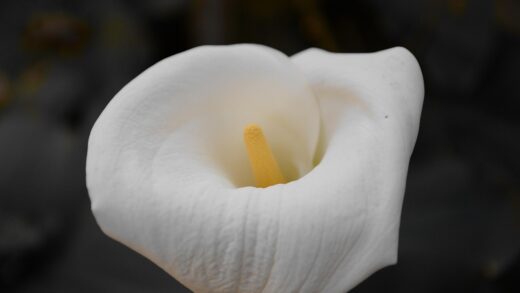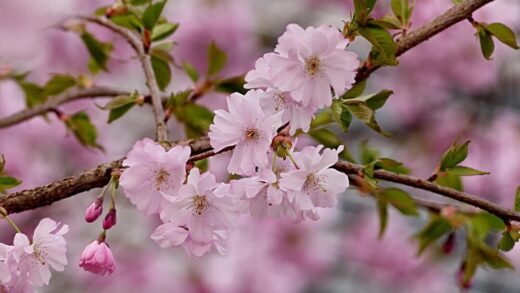Successfully guiding Lithodora diffusa through the winter months is a critical aspect of its long-term care, particularly for gardeners in climates that experience freezing temperatures and harsh conditions. While this evergreen sub-shrub possesses a degree of hardiness, its survival is not guaranteed without some thoughtful preparation and an understanding of the specific challenges winter presents. The primary threats during this dormant period are not just the cold itself, but a combination of factors including frozen soil, desiccating winds, and excessive moisture around the roots. Therefore, a comprehensive wintering strategy focuses on mitigating these risks, ensuring the plant emerges in spring healthy, intact, and ready to produce its spectacular floral display. The preparatory steps taken in autumn are an investment that pays significant dividends in the plant’s longevity and performance.
The plant’s inherent hardiness is a key factor to consider. Most cultivars of Lithodora diffusa are generally rated as hardy in USDA zones 6 through 8. This means that in regions with moderately cold winters where temperatures do not consistently plummet to extreme lows, an established plant in a well-chosen location should survive without extraordinary measures. However, even within these zones, a particularly severe winter, a lack of snow cover, or an exposed location can push the plant beyond its limits. In colder areas, such as zone 5, it should be treated as a tender perennial or given significant winter protection to have a chance of survival.
The combination of frozen ground and winter sun or wind poses a significant threat known as physiological drought or winter burn. Because Lithodora is evergreen, its leaves continue to lose small amounts of moisture through transpiration, even in winter. When the ground is frozen solid, the roots are unable to absorb any water to replace this loss. This deficit can cause the foliage to dry out, turn brown, and die. This is why a location sheltered from strong, prevailing winter winds is so crucial, as the wind dramatically accelerates this process of desiccation.
Excessive wetness is the other major enemy of Lithodora during the winter. Cold, waterlogged soil is a death sentence for its roots, which are highly susceptible to rot. During the winter, when the plant is dormant and its water uptake is minimal, saturated soil can quickly lead to the decay of the entire root system. This underscores, once again, the absolute necessity of providing sharp drainage. A well-drained, gritty soil will not hold excess water, allowing melting snow and winter rain to pass through quickly and keeping the root zone from becoming a fatal, icy swamp.
Preparing the plant for dormancy
The process of preparing Lithodora for winter begins in late summer and autumn, long before the first frosts arrive. One of the most important steps is to cease all fertilization by mid-summer. Applying fertilizer, especially those high in nitrogen, late in the season encourages a flush of soft, tender new growth. This new foliage will not have enough time to mature and harden off before winter sets in, making it extremely vulnerable to frost damage. Allowing the plant to slow its growth naturally is essential for it to properly prepare for its dormant period.
More articles on this topic
As autumn progresses, it is important to gradually reduce any supplementary watering. The plant’s water requirements decrease significantly as temperatures cool and its growth rate slows. Allowing the soil to become slightly drier helps to signal the plant that it is time to transition into dormancy. Continue to water only if there is a prolonged and unusual autumn drought, but otherwise, allow natural rainfall to suffice. This helps to prevent the soil from being overly saturated as the plant enters the coldest part of the year.
Good garden hygiene in the autumn is also a beneficial preparatory step. Gently remove any fallen leaves from other plants that have accumulated on top of the Lithodora’s foliage. A thick, wet blanket of decaying leaves can trap too much moisture against the plant’s crown, promoting rot and creating a haven for slugs and other pests over the winter. Ensuring good air circulation around the plant right up until the ground freezes can make a significant difference in preventing winter diseases.
A final, deep watering before the ground freezes solid can be beneficial, particularly in dry climates or if the autumn has been rain-free. This ensures the plant is well-hydrated before its water supply is cut off by frozen soil, which can help to reduce the risk of winter desiccation. However, this should only be done if the soil is dry and is guaranteed to drain well. This pre-freeze watering should be timed carefully, ideally a week or two before the first hard freeze is expected.
The role of mulch in winter protection
Mulching is one of the most effective techniques for protecting Lithodora diffusa during the winter, but it must be done correctly. The primary purpose of a winter mulch is not to keep the plant warm, but rather to insulate the soil and protect the roots from the damaging effects of repeated freezing and thawing cycles. These cycles can heave the plant out of the ground, exposing its roots to cold, drying winds. A stable soil temperature is much healthier for the dormant root system.
More articles on this topic
The ideal time to apply winter mulch is in late autumn, after the first hard frost has occurred but before the ground has frozen solid. Applying the mulch too early, while the ground is still warm, can delay the plant’s dormancy and may even encourage rot at the crown. Waiting for the ground to cool down ensures that the plant is already dormant and that the mulch will serve its intended purpose of keeping the soil cold and frozen, rather than warm.
The choice of mulching material is very important. A light, airy material that does not become waterlogged is essential to avoid smothering the plant and causing crown rot. Shredded pine bark, pine needles, or chopped leaves (especially oak leaves, which are acidic) are excellent choices. These materials insulate the soil while still allowing for some air circulation. Avoid heavy, dense materials like whole leaves or thick layers of compost, as these can become a sodden mat over the winter and do more harm than good.
Apply a layer of mulch two to three inches deep over the root zone of the plant, but take care to pull the mulch back slightly from the immediate crown of the plant. Piling mulch directly against the stems can trap moisture and lead to decay. In very cold regions, a further layer of protection can be provided by placing evergreen boughs (such as those from a Christmas tree) over the top of the plant after the ground has frozen. These boughs help to trap an insulating layer of snow and provide further protection from wind and sun.
Overwintering in containers
Growing Lithodora in containers presents a different set of winter challenges, as the roots are far more exposed to cold temperatures than they would be in the ground. The soil in a pot can freeze solid much more quickly and reach a much lower temperature than garden soil, which can easily kill the plant’s root system. Therefore, in any climate where the ground freezes, container-grown Lithodora will require special protection to survive the winter. Simply leaving the pot in an exposed location is rarely a successful strategy.
One of the most effective methods for protecting a potted plant is to move it to a sheltered location for the winter. An unheated garage, a cold frame, a shed, or a sheltered porch where temperatures will remain cold but consistently above extreme lows is ideal. The goal is not to keep the plant warm and growing, but to protect its roots from the worst of the cold. The plant will remain dormant in these conditions and will require very little light and only minimal watering throughout the winter.
If moving the pot is not feasible, you can insulate it in place. Grouping several pots together can help to reduce heat loss. The entire pot can be wrapped in bubble wrap or burlap to provide a layer of insulation. Another effective method is to “plunge” the pot, which involves burying the entire container in the ground in a sheltered part of the garden. The surrounding soil will then provide excellent insulation for the roots, mimicking the conditions of a plant grown in the ground.
Watering is a critical consideration for overwintering containers. The soil should not be allowed to dry out completely, as this can desiccate and kill the roots. However, it is equally important not to overwater, as soggy, frozen soil is fatal. Check the soil moisture every few weeks. If it is bone dry, provide just enough water to make it lightly moist. In the spring, once the threat of hard frost has passed, the container can be moved back to its summer location, and regular watering can resume as new growth appears.
Spring revival and care
As winter begins to recede and the first signs of spring appear, it is time to start waking up your Lithodora. The timing for removing winter protection is crucial; it should be done gradually to avoid shocking the plant. As the snow melts and daytime temperatures consistently remain above freezing, you can start by removing any evergreen boughs that were placed over the plant. This allows light and air to reach the foliage and begins the process of acclimatization.
The winter mulch should be left in place a little longer, as it continues to protect the roots from any late-season cold snaps and the freeze-thaw cycles that are common in early spring. Once the threat of hard frost has truly passed and you see signs of new growth beginning to emerge from the center of the plant, you can gently pull the mulch away from the crown and spread it out over the surrounding soil. This allows the sun to warm the soil around the plant and encourages it to break dormancy.
It is common for Lithodora to look a bit battered after a long winter. Some of the foliage may be brown or discolored due to winter burn. Do not be too quick to prune this away. It is best to wait until new growth is well underway in mid-spring, as this will give you a clear indication of which parts of the plant are truly dead and which are still viable. Once you can clearly see the new green shoots, you can use a pair of sharp secateurs to prune out any dead or damaged stems, trimming them back to a point where new growth is emerging.
Once the spring cleanup and pruning are complete, this is the perfect time for the plant’s annual feeding. Apply a dose of slow-release ericaceous fertilizer around the base of the plant and water it in well. This will provide the nutrients needed to fuel a strong flush of new growth and ensure a spectacular display of blue flowers. Resume a regular watering schedule as the weather warms, providing consistent moisture to the newly active root system.


















